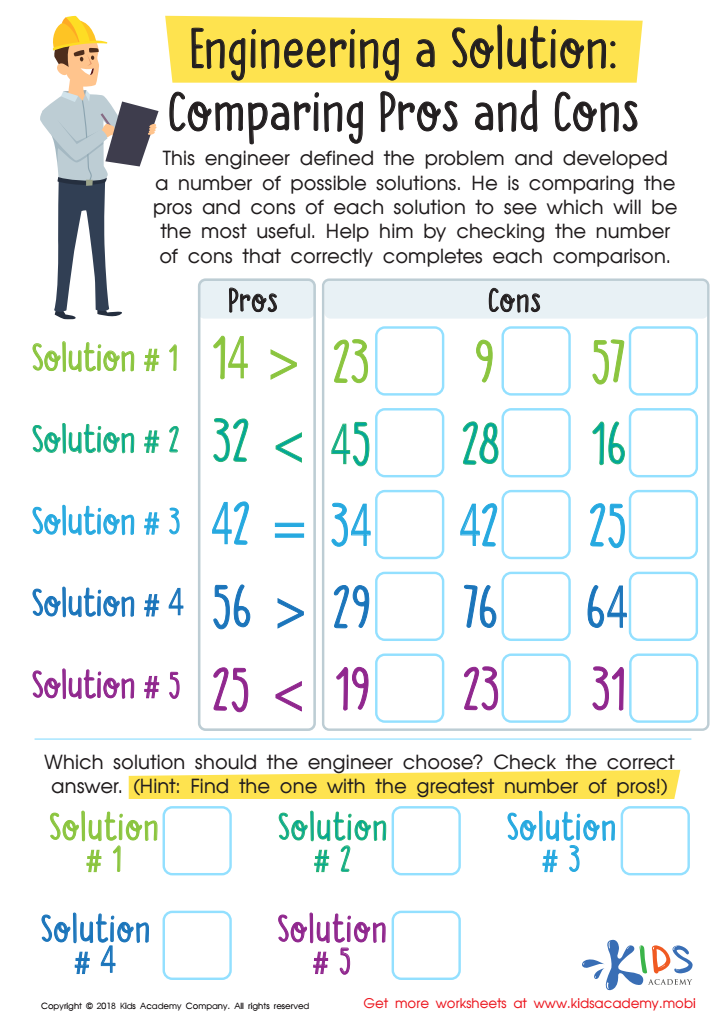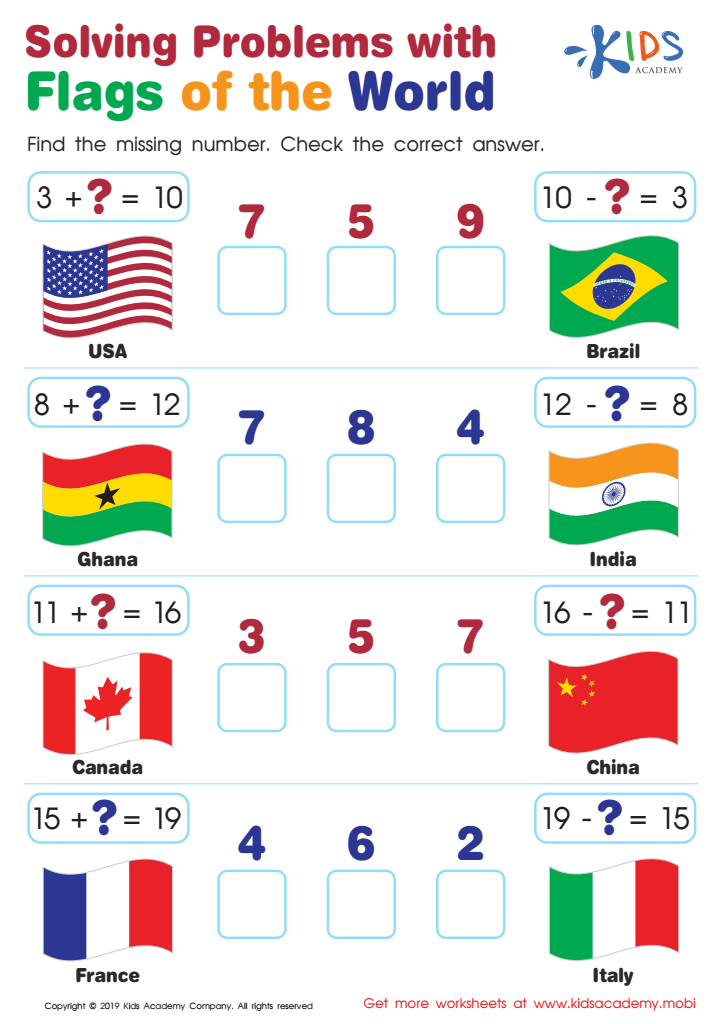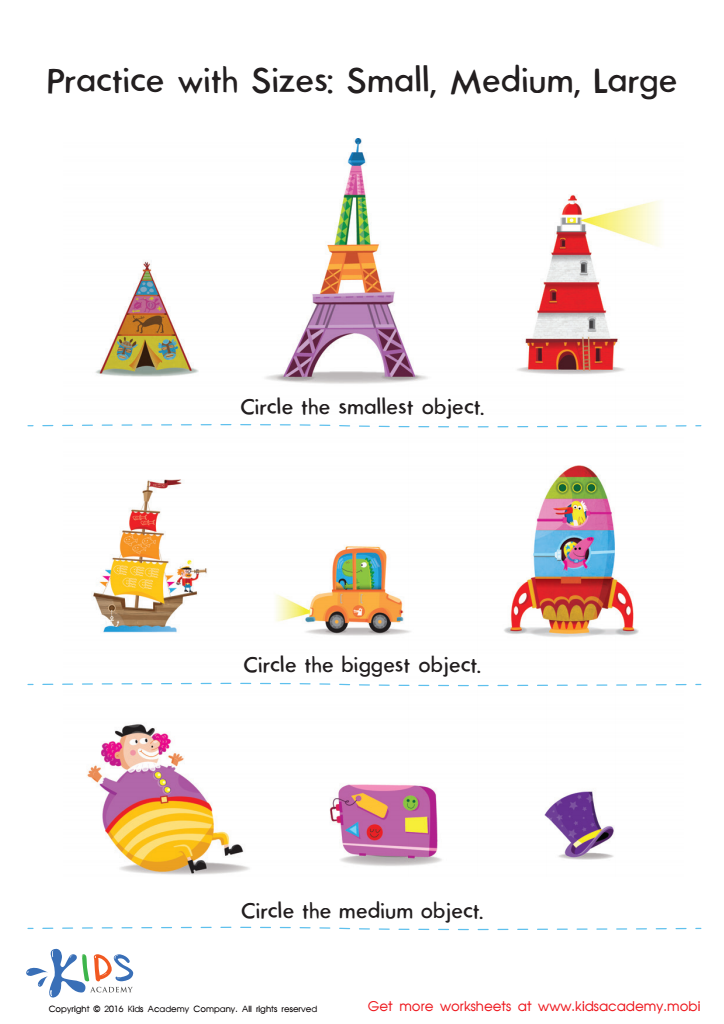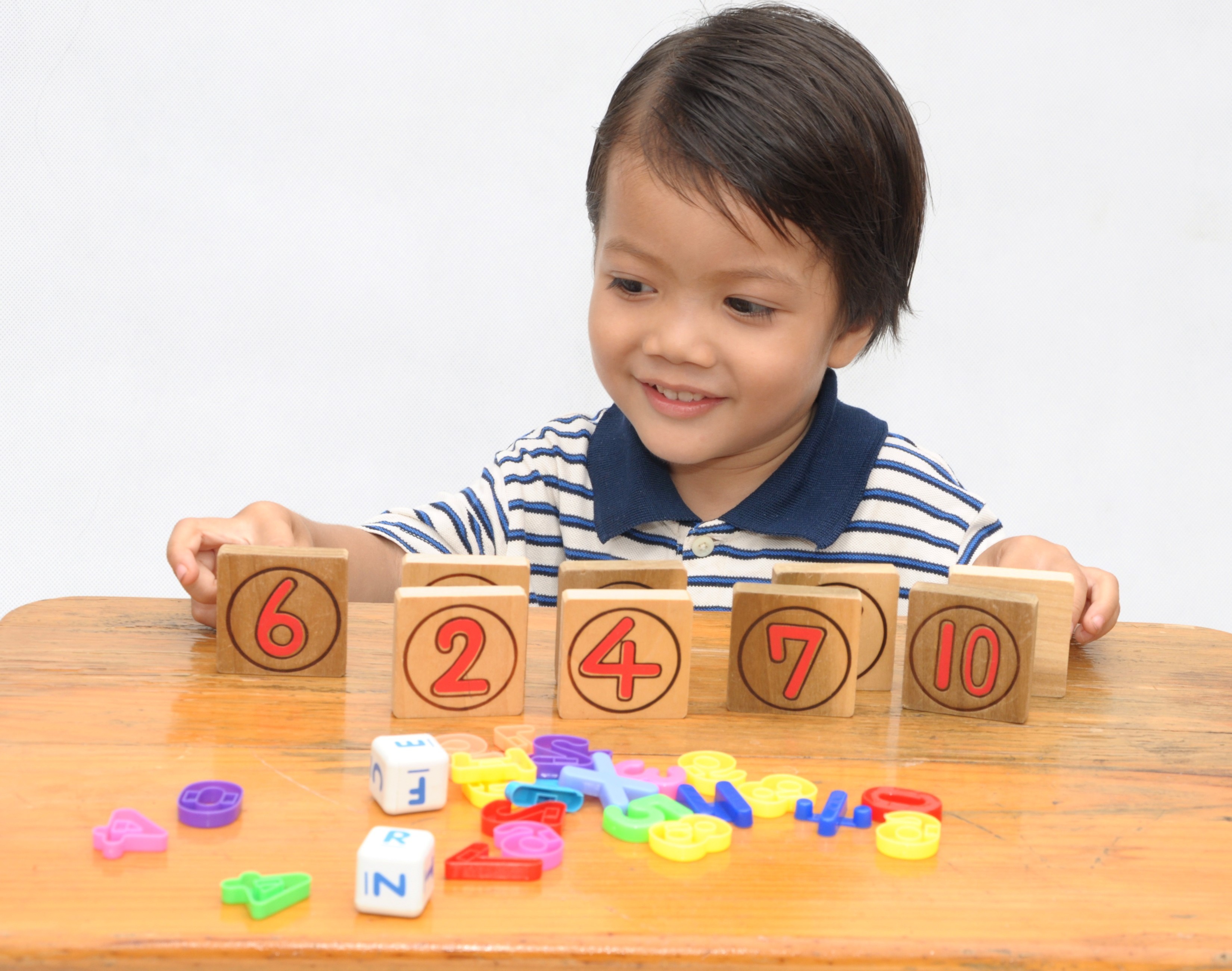Comparative analysis Normal Worksheets for Ages 6-7
3 filtered results
-
From - To
Explore our "Comparative Analysis Normal Worksheets for Ages 6-7," designed to enhance critical thinking and analytical skills in young learners. These engaging worksheets provide a variety of activities that encourage children to compare and contrast different concepts, fostering a deeper understanding of similarities and differences. Perfect for classroom or at-home learning, our resources help children develop observational skills while having fun. Each worksheet is tailored to age-appropriate learning objectives, ensuring a structured approach to skill development. Unlock your child's potential with these educational tools that mix play and learning seamlessly, paving the way for a strong foundation in comparison analysis.


Engineering a Solution: Comparing Pros and Cons Worksheet


Solving Problems with Flags of the World Worksheet
Comparative analysis normal for ages 6-7 is a vital tool for parents and teachers as it provides insights into children's developmental milestones, academic performance, and social-emotional growth. Understanding normative data allows educators and parents to identify where a child stands in relation to their peers, facilitating informed decisions about individualized learning strategies.
At this age, children undergo significant cognitive, social, and emotional changes. An awareness of norms helps identify strengths and weaknesses, ensuring that interventions can be applied when necessary. For instance, if a child is struggling in reading compared to their peers, early identification can lead to targeted support, fostering improvement and confidence.
Moreover, comparative analysis prepares children for future academic endeavors by monitoring their ability to grasp essential skills that serve as a foundation for learning in higher grades. Parents who are informed can better advocate for their child’s needs and seek additional resources if necessary.
Ultimately, valuing this analysis encourages a collaborative approach, aligning the efforts of parents and teachers towards supporting the child’s overall development. By being proactive based on comparative norms, adults can create environments where children thrive, become more engaged learners, and achieve their full potential.
 Assign to My Students
Assign to My Students

















